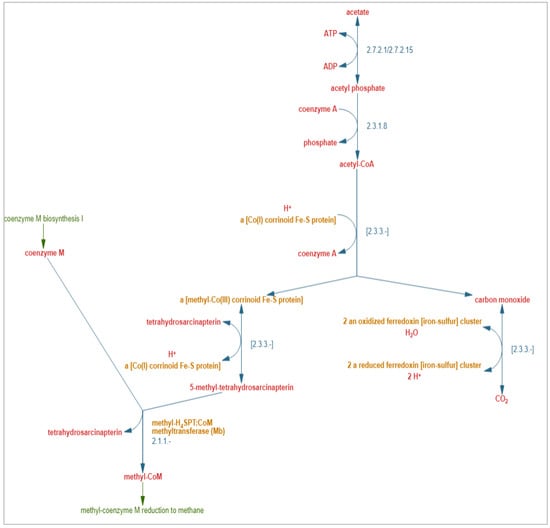- Article
Specific Nature of Neutral Red: A Study on Methanosarcina barkeri
- Priyanka Srivastava and
- Sheikh S. Rahman
Neutral red (NR) is a phenazine dye that has been implicated in electron transfer processes in methanogenic archaea. NR has been previously observed to enhance methane production but its effects on Methanosarcina barkeri are unknown. This study aimed to investigate the effects of NR on M. barkeri DSM-804. M. barkeri cultures were grown in the presence of 10 and 250 µM NR for four weeks, and proteomic analysis was performed using liquid chromatography-tandem mass spectrometry (LC-MS/MS). The results showed that methane production was significantly reduced in the presence of NR, at lower concentrations of both 10 and 250 µM NR treatments, compared to the control. Proteomic analysis revealed the downregulation of proteins related to substrate metabolism and methanogenesis, such as the heterodisulfide reductase subunits D (HDRD_METBF) and E (HDRE_METBF), suggesting that NR hindered essential metabolic processes. Proteomic analysis also revealed that M. barkeri lacked methanophenazine in its membrane, which is a component essential for electron transport via neutral red (NR) that supports enhanced growth and methane production. Further research is needed to explore the role of methanophenazine and understand the mechanisms underlying NR’s effects of NR on methanogenesis in M. barkeri.
19 December 2025


